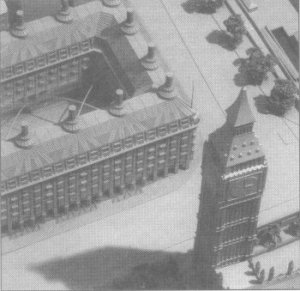John Gummer MP - TrustNews Summer 2000
Some notes from the press and questions and answers on the talk on 6th April by John Gummer MP:
"New development for future generations to respect us for; a lost opportunity could insult our generation for a long time."
The former conservative Environment Minister's lecture was commented on by the local press. A cutting from the Hampshire Chronicle edition of 14th April:
Mr. Gummer said: "What a joy if Winchester had the courage so that people did not come just to look at the Cathedral and the historic bit but also to look at the brilliant piece of architecture they did in 2002.
"We have a feeling that we have to retain and protect everything, irrespective of whether it's terribly good or not. But that's not preservation - it's taxidermy; and we are not here merely to preserve".
We must have something to contribute, something which will stand up and future generations will look back and say: "Well, they did do that well."
The Trust has already expressed its preference for the development to be a mix of retail and residential, and that "whatever is built must be of the highest quality in terms of design and materials".
He said Winchester, which he thus described as "one of the great cities of Europe", should be humble enough to admit that the development could not be done in-house by a run-of-the mill architect". Instead, he suggested that half-a-dozen top architects should be invited to propose designs for the development.
"Let's do something exciting. Do not suggest what it should look like offer a broad brief. We want quality. You can't legislate for taste – we are talking about quality." Courage, he admitted, would inevitably run the gauntlet of criticism: "You have to live dangerously but you can't have opportunity without danger."
It's worth remembering that three of the most popular buildings all resulted in riots when they were built – St Paul's, Tower Bridge and the House of Commons. But we can't imagine London without them.
"Winchester is too great a city to betray by not being courageous enough to give a mark of this generation. "We are so frightened of doing anything unusual that we can only agree on something that is not so bad that it offends. That's what we get by with - just the average.
"Winchester would not be thought of at all if we had built a cathedral that was not too bad. I want Winchester to be courageous. You have a remarkable opportunity - I hope you take it “.
Questions put forward to John Gummer

Portcullis House, courtsey of Building Design
Q1 What do you see is the greatest challenge facing historic cities like Winchester in the next ten years?
J.G. To do something to live up to inheritance. A few examples like the densely built terrace with a mixture of shops and pubs, opposite the Guildhall, down towards St. John's Hall.
Q2 The Trust is faced with the problem of considering planning applications for a large size development in an historic context. Have you seen any modem buildings or new developments that are successful in that respect in other cities?
J. G. The New Parliamentary Building, next to the House of Commons, Portcullis House, is a good example. The city centre of York, Birmingham's Brindley Place and Hereford's city square, for example. Norwich centre is highly successful too, it retains its liveliness. The Cathedral and the shopping centre reflect stimulating city life, it attracts people there to shop. The shopping centre is not overbearing.
He warns of trying to compromise or of going down the route of pastiche. This is what happened in Durham, or what the Duchy of Cornwall encouraged in Poundbury.
Q3 Traffic: Even quite modest restrictions on traffic and parking in the city have caused a considerate amount of local opposition. Do you think that local authorities need to be more courageous in the face of such opposition?
J.G. Public transport needs to be imaginative to reconcile dense city and traffic. A car hire scheme would be more convenient. The power of county's road and engineering departments are well known. Road signs and yellow lines should be cut back to a minimum.
